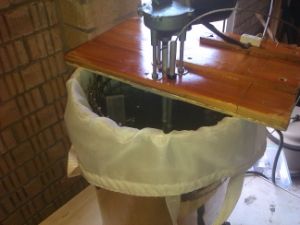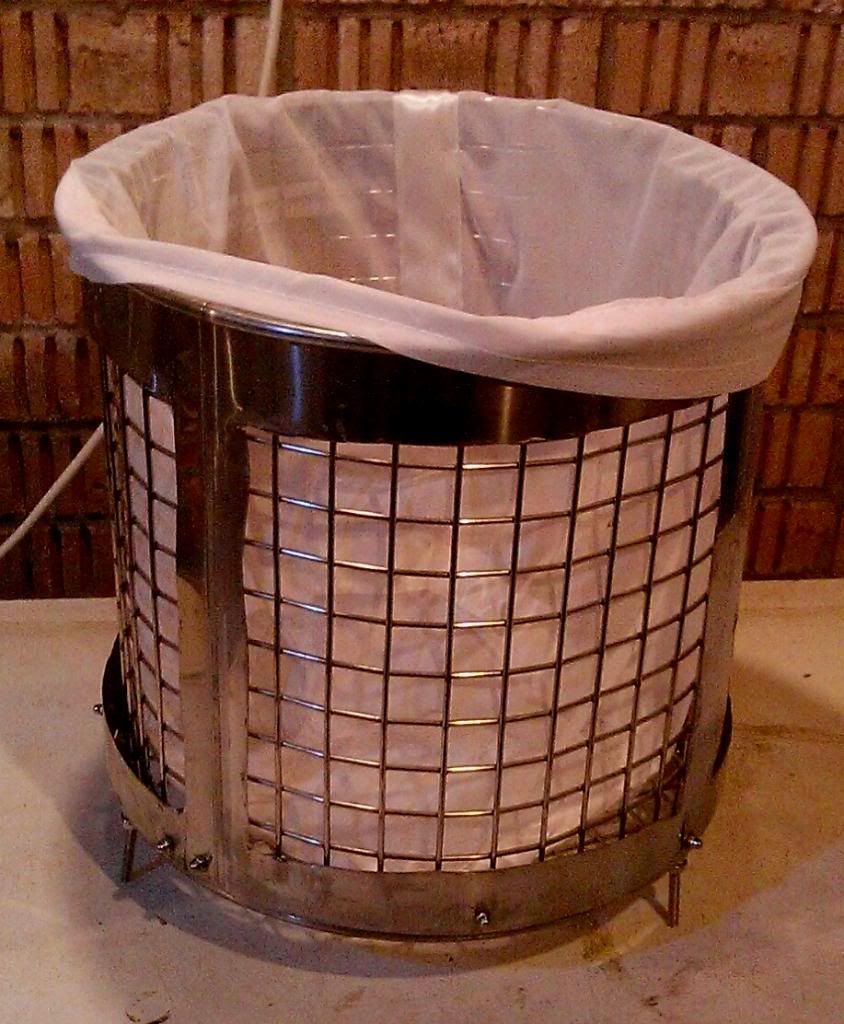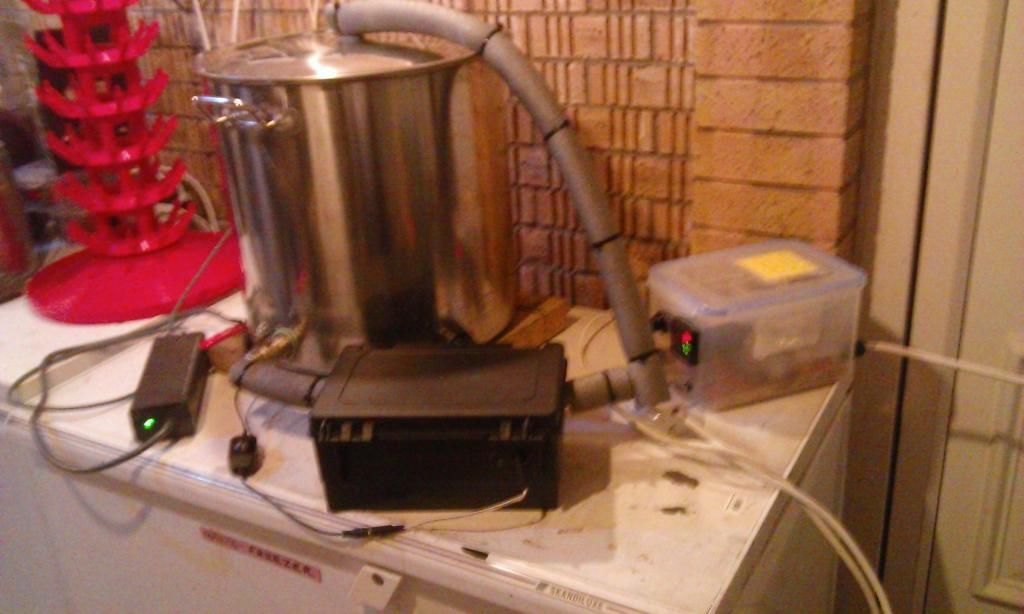Owly055
Well-Known Member
- Joined
- Feb 28, 2014
- Messages
- 3,008
- Reaction score
- 686
Here is a rough drawing of an in/bag circulation system for BIAB. The purpose is to allow you to dough in the night before brew day at tap water temp, and use a timer to start your mash just as you would your morning coffee so the mash is done when you get up. It is to be used with a hot plate and any level of control suitable. For example the minimum level of control would be to set the hot plate at a specific level, knowing how long it will take to reach mash out temp and just do a slow heat. The next level would be a wake up alarm based on temp. The next level would be fast heat to a specific mash temp using a PID controller. The next level would be to have a separate kettle that would heat to strike temp, and a valve that would drain the strike water into the mash kettle, using the circulator to mix the mash, etc.
The impeller, not shown in detail would initially be nothing more than a flat disk with several slots cut into it and tabs turned up.
The motor could be any number of possible motors. The cheapest might be an electric mixer, or a harbor freight variable speed drill. Variable speed would be desirable. There are numerous variable speed motors for various applications that could be cannibalized or simply borrowed for this.

The impeller, not shown in detail would initially be nothing more than a flat disk with several slots cut into it and tabs turned up.
The motor could be any number of possible motors. The cheapest might be an electric mixer, or a harbor freight variable speed drill. Variable speed would be desirable. There are numerous variable speed motors for various applications that could be cannibalized or simply borrowed for this.





